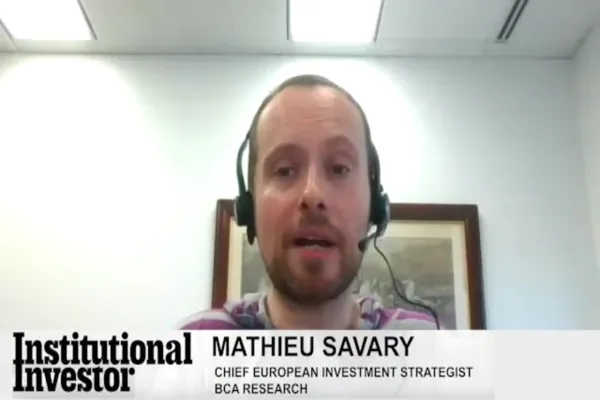Less than 15 years apart, the world at large and investors have been confronted by the Global Financial Crisis and a global pandemic. The shocks and knock-on effects of both have challenged long-held assumptions and raised questions around economic models that are showing their age. The introduction of massive and ever-increasing amounts of data has also pushed some economic models beyond what they were originally designed to do – and created an opportunity to generate alpha by leveraging an econophysics-driven investment approach, which generally speaking applies methods and tools from physics to explain economic occurrences.
“With more data you can build better models, and with better models you can build better investment strategies and products,” says Jean-Phillipe Bouchaud, Chairman, Capital Fund Management (CFM), who is a statistical physicist and considered one of the world’s leading econophysicists. “Physicists look at the data and build theories. In traditional economics and mathematical finance, the goal is to build beautiful intellectual cathedrals. Physicists believe it’s an absolute necessity to describe the world as it is – it doesn’t have to be beautiful.”
The quest to describe the world as it is through quantitative strategies travels the boundary between data noise and faint but invaluable signals that can lead to alpha.
“Creating good alpha models from data requires a conviction that there is something of value in the data that will elude most analysis, and the discipline to extract predictive signals that are relevant and discard the rest,” says Bouchaud.

An alpha state of mind
One drawback to many old economic models is the assumption that markets are efficient when it’s anomalies in the market that spur opportunity. A steadfast belief that markets are efficient can blunt the desire to think about how inefficiencies might occur, what they might look like, and how they might be uncovered through high level data analysis and experimentation.“Physicists are trained to do experiments and mathematicians are trained to prove theorems,” says Bouchaud. “Economists don’t have the equivalent of experiments. A mind that is trained to experiment with data is crucial when you want to trade to create alpha signals. It requires a realization that you don’t throw away data points because they don’t fit the theory, but rather throw away the theory because it doesn’t fit the data points. It’s about doing things as well as possible, even at the cost of losing a little mathematical aesthetics or rigor.”
Successful investment strategies do not consist solely of alpha signals, however. Skill and talent are required to create a mix of alpha signals in a universe consisting of multitudes stocks and many different assets. Not to mention, investment ideas and decisions must be executed as trades, preferably at the lowest possible cost.
“Surprisingly, a lot of investors tend to focus on identifying alpha and don’t pay sufficient attention to portfolio construction and execution,” says Bouchaud. “But if you’re not careful with those second and third steps you can ruin the weak alpha signal that you’ve painfully extracted from data. Those three steps interact. There are costs because you impact markets, and these costs have to trickle back into the portfolio construction to tell you exactly what quantities you can trade on an asset given your alpha signal.”

Why modern institutional investors should care about econophysics
One of the main assumptions of traditional economic theory is that agents are rational and that economies achieve a semblance of equilibrium unless exogenous shocks occur. Similarly, there are those who believe that fluctuations in financial markets can only take place if the underlying fundamental value is changing.To Bouchaud, such thinking is “complete rubbish. Financial markets are extremely sensitive to what people do. Even if they do things for ridiculous reasons, prices are going to react. And because prices react other traders will take a cue from them to react further, and so on. If you understand that markets tend to react to flukes, to what people do – and we know people act on behavioral biases and all sorts of other things – then it makes sense to extract statistical signals from prices or from other indicators and trade on them.”
Over the summer, Bouchaud spent some time reinterpreting Xavier Gabaix and Ralph S. J. Koijen on a paper titled “In Search of the Origins of Financial Fluctuations: The Inelastic Markets Hypothesis.” Like Darwin’s “Origins of…” it challenges long-held beliefs by positing that the “price elasticity of demand on the aggregate stock market is small and flows in and out of the stock market have large impacts on prices.” The authors go on to say that $1 invested in the stock market increases the market value by about $5.
“The inelastic hypothesis puts on a much firmer basis the idea that over the long-term prices change independently of fundamental value, which in and of itself may be a figment of our imagination,” says Bouchaud. “No one has been able to define what the fundamental value of a company should be. The idea that even uninformed flows into stocks or markets in general will have a long-term impact is something that is gaining a lot of traction. It makes complete sense, and my hope is that everything is going to tie together and lead to a picture of markets that makes more sense from an empirical point of view and open new avenues to think about trading and investments.”
Many institutional investors, of course, fall under the definition of long money, and as such are likely more interested in the type of macroeconomic models that need to be reinvented (as compared to microsecond differences in execution). From that viewpoint, Bouchaud believes that “from the point of view of our general welfare it’s important to have better models, regardless of CFM, hedge funds, and trading. The central banks should have better models. Why are they surprised by inflation? When the Global Financial Crisis hit, Jean-Claude Trichet was heading the European Central Bank in 2008, and he later said that they were surprised because traditional methods were of no use in understanding what was going on. His exact words were: ‘We felt abandoned by conventional tools.’”
In the context of the traditional economic models such as those used by central banks, exogenous shocks are thought to be the only things that can disrupt the norm. To blindly stick with those models, says Bouchaud, is a failure of imagination.
“It’s not accurate to say black swan events are hard to predict because they are exogenous and thus by definition unpredictable,” he says. “Sometimes the data that can predict such an event is just waiting for someone to discover it, but no one has the tools to connect the dots and see how natural mechanisms in the economy would lead from A to B. With a physics-based and more complex type of thinking there is scope for building better models.”
For more information on CFM strategies and insights visit CFM.fr or contact CFM@CFM.fr.
Disclaimer: Any description or information involving investment process or allocations is provided for illustration purposes only. There can be no assurance that these statements are or will prove to be accurate or complete in any way. All figures are unaudited. This article does not constitute an offer or solicitation to subscribe for any security or interest.






